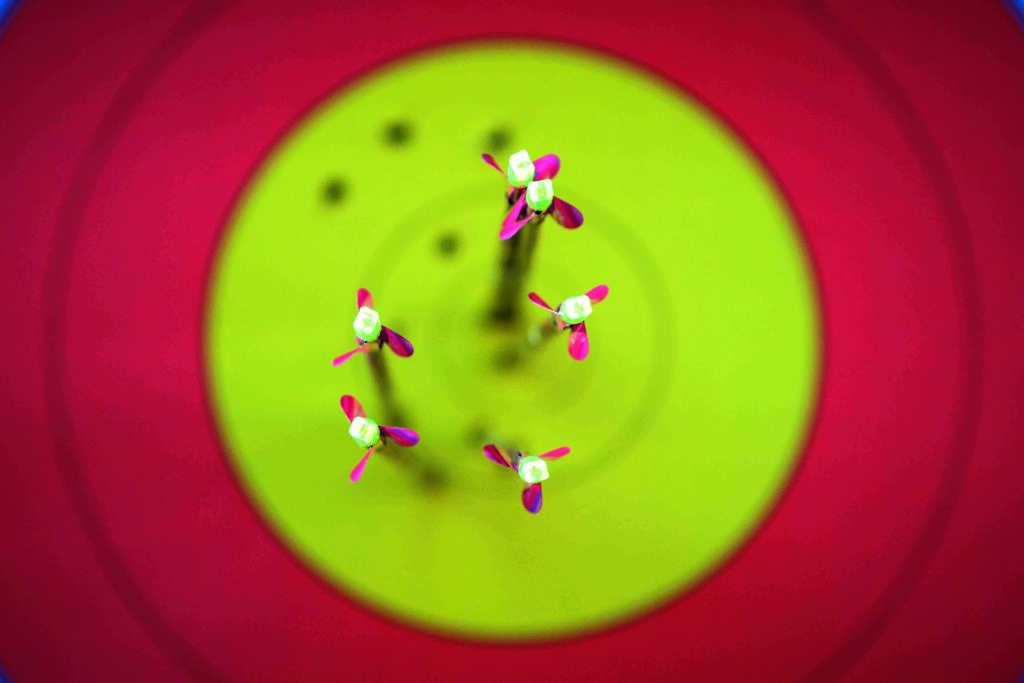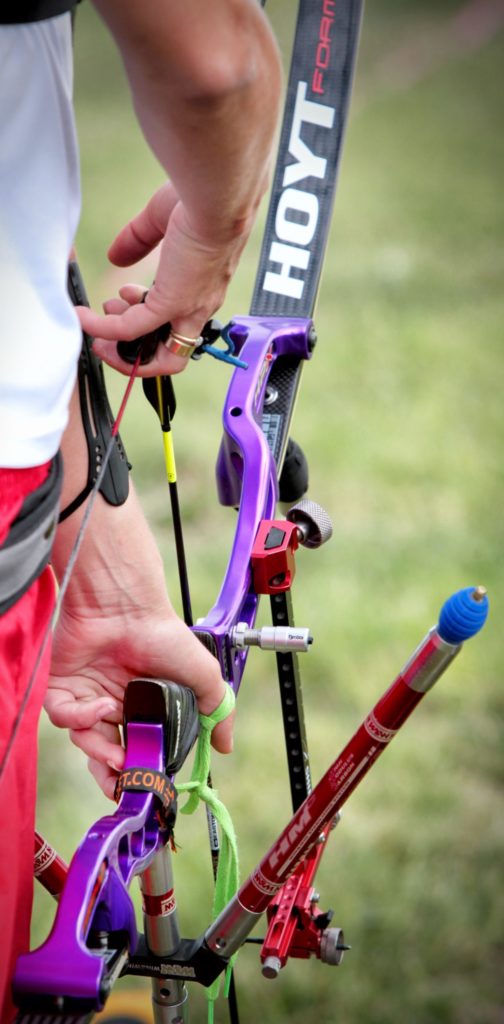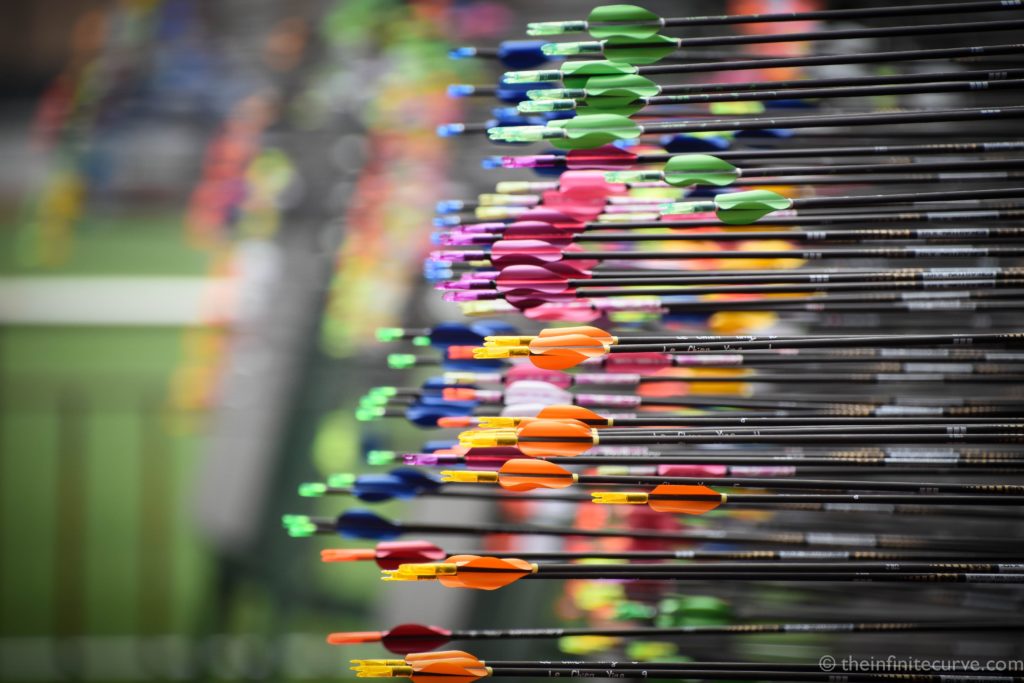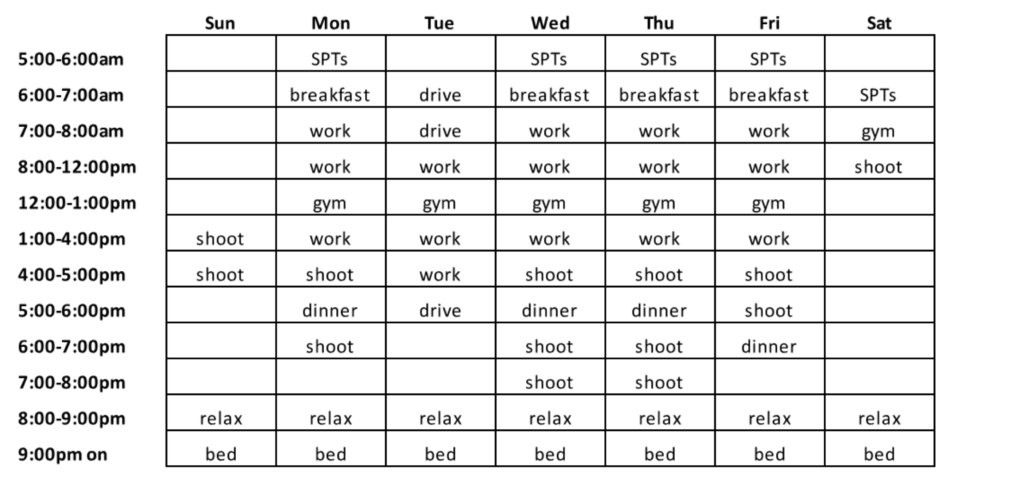Quick-fire ways to get organised and boost your shooting in short sessions. By Andrew Smith
I am often asked how archers can improve their scores and shooting form, despite only being able to shoot once or twice a week. I find that it is not very effective to simply replicate what the top archers are doing by following selective parts of a complicated training routine without the time to give it justice.
We all understand the pressures of day-to-day life and how it often means sacrificing shooting time, so my view is that we should use our shooting time productively and work smarter. Much of what I am going to suggest can be done at home.
With some planning and organisation, these seemingly uncontrollable influences can be overcome and even work in your favour.
The important thing is to remember that archery is your chosen sport and an opportunity to take you away from daily pressures. So, when things don’t appear to be going as you expect, simply go with the flow – that way, you won’t get frustrated and give up.
Unfortunately, any improvement does not happen by accident and, needless to say, work and effort is required to get the desired results. How quickly things change will be down to you, but a few minutes on a few days each week should see your scores increase.
Many compound archers can easily pick up their bow (it’s already put together), walk outside and get 30 to 50 arrows in, even if they only have 30 minutes of extra time. However, recurve archers may not have this luxury.
Their best bet is to do some type of strength exercise, such as an SPT (specific physical training) or hold drill, or to do some form work with a stretch band.
If you feel strength has been the weakness in your shooting, go with option one, but if you are making form changes, focusing on mental work or need more time visualising, I suggest option two.
Do you really need to step up in draw weight?
One of the biggest issues when you are unable to control your shot is that your draw weight is either too heavy or too light. Too heavy is an obvious problem, as you lose the fine control you need and simply miss the target faster.
However, having too light a bow can be equally problematic. When things are too easy, we tend to lose focus and not concentrate on what we are doing. Before you know it, errors have crept into your shooting form.
In recurve archery, it is important to shoot regularly to maintain the muscles we use for archery. If you don’t then when you come to shoot your bow, it will feel too hard to draw back until you become archery fit again. The heavier the draw weight you shoot, the sooner this effect comes into play.
A bow that’s too light will require heavier limbs, although to address the issue of struggling with a heavy bow, I think everyone can find time in the week to do a few extra exercises. It doesn’t have to be every day, but the more you do, the quicker you will see and feel the results.
All you need is your bow – strung – and your tab. The exercise is simple: draw your bow up, hold the position at full draw for five seconds, then let down for five seconds and repeat. Stop as soon as you struggle to maintain good form.
The extra rep done with poor form is not going to help. Initially, you may find you only do three or four, but this will slowly increase. If you cannot do this number from the start, then your bow really is too heavy and you might want to consider a change of limbs.
Stand tall
Everything we do in archery is affected by how we position our feet and our posture. If our feet are in a different position each time we go on the line, we end up aiming in a different direction, which requires correction of our upper body.
Slouching is no good either, and bums and waistlines sticking out do not help. So, work on standing tall while doing reversals with the bow and using the stretchy band. Ideally, if the exercises could be done in front of a mirror (a reflection in patio doors or a video on your phone also works) so much the better, as you get instant feedback.
We all have a natural body position that will allow us to shoot and not see our bow arm flap around after the shot. To find this position, stand on the shooting line, draw up your bow and aim, close your eyes for two seconds, then open them again and see where your sight pin is in relation to the gold. It is most likely not on the gold.
We’re not worried about the vertical position here, only the horizontal. It’s a case of trial and error, but to correct for this you simply move your feet position a few centimetres and repeat. Keep doing this until you can open your eyes and see the sight pin has stayed central on the gold. This is your natural feet position.
I suggest that to avoid any accidental dry-firing of your bow you do load an arrow for this and, because you’ll be closing your eyes, have a friend assist you on safety grounds.
Stop playing with your gear
Of course, new equipment is fun and shiny, and can inspire you to get out there more often. But far too many archers change gear far too often. Trying out, testing and tuning new gear takes up inordinate amounts of time that could often be better spent working on form. If you need to work on equipment, do that in a spare moment at home. Try to use every minute at the range to your advantage.
Time spent at the range
Shooting at the range is the reason we do archery, so here are a few ideas on how you can make the most of your time, enjoy what you are doing and improve at the same time.
Firstly, don’t do bow tuning – you are working on improving your form and putting into practice all the work you have done in your spare time. Bow tuning should be done at a specific session.
Providing you have correctly spined arrow shafts and a basic bow set-up, then making an adjustment to a screw or spring will not result in the kind of gains you will get from working on shooting better. In fact, the better your form, the straighter and more consistently your arrows will fly.
Secondly, I don’t recommend a large amount of blank boss shooting, unless your coach has specifically recommended it. To get the benefit, I find that you need to do it regularly. As soon as you put up a target face, it’s easy for all the focus to go on aiming and the work you have done to improve your form goes out the window.
So, work on implementing the feel from the stretchy band into your shooting, whether you are simply plonking a few arrows with friends or shooting a round. Yes, you will get some poor shots, but hopefully fewer than before.
Training with a purpose is the next strategy on my list. If you are pressed for time to train, you must be careful not to waste the time you do have, simply flinging arrows. How many times have you heard someone say they shoot such and such a number of arrows each day, with no rhyme, reason or purpose?
Unfortunately, this is all too common in the sport. Each session should be varied in terms of the number of arrows you shoot, what you work on and the ‘stress’ level.
Concentrate on what you are trying to achieve while you are making the shot, then switch off when collecting arrows and scoring. This way, you will be able to concentrate when it matters. The main points are to pay attention to your feet position, stance and shot execution.
If your memory is not very good, or you find it’s a lot to try to think about, write down the steps and refer to it regularly during the session. Accept all will not go well instantly, that this is an ongoing process, and you’ll find that, over time, you will not have to think about what you are doing, you’ll simply be able to feel when it is right. When it is wrong, stop and start again. A poorly set-up shot rarely sends the arrow where you want it.
Most importantly, enjoy your time shooting. Training can be fun and I think that we all like to see some improvement each year, at whatever level we shoot. I have outlined a simple plan to help you achieve this. It is not the complete answer, but at least it is a start to making your time down at the range more productive – and might even allow you to pick up a few medals and achievement badges along the way.
Being prepared
Finally, always be prepared. For some archers, this means having an archery shop in their house with all the tools they need to work on their bow: bow press, string jig, draw board and so on. For others, it means having a kit they carry with them to the range with all the supplies they might need that day shooting, such as extra rest blades, fletchings, glue and so on. This way, they can make repairs or changes on the spot without having to leave the range. A dozen spare nocks in the car takes up little space and can be a lifesaver.





